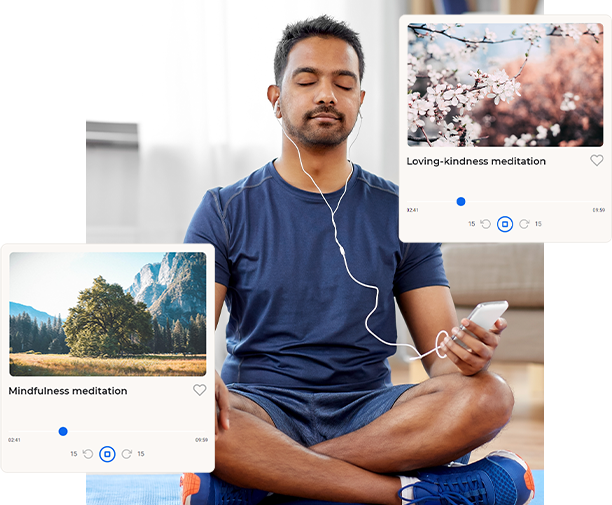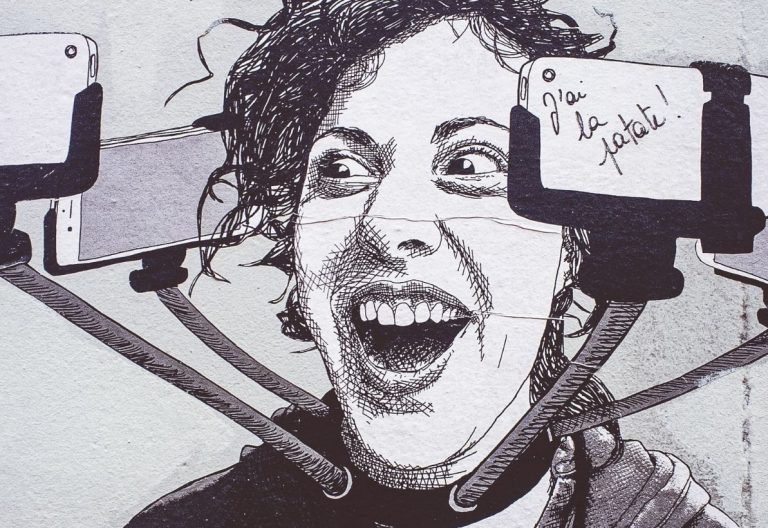A human experience is said to boost happiness and productivity while providing the meaning of life. From athletes to artists, writers, performers, and surgeons, this one particular experience is common among high-performing individuals. And the best thing about this experience is that every human being can achieve its state regardless of their gender, nationality, age, or religion. What is it? It’s called the flow state.
Colloquially termed being “in the zone,” it’s a human experience of total immersion in something where you lose yourself. In the moment, you are truly happy, content, and time seems to be a non-existent concept. That’s because those who experience a flow state are living in the present. They’re no longer in their heads, swaying between past and future times. You’re living in the moment.
In this article, we’ll explore what flow state is, who discovered it, and how it benefits the human experience.
What is Flow State?
Flow State is a state of being fully immersed in whatever you are doing that you achieve a “sense of ecstasy, a sense of clarity, and you know exactly what you want to do from one moment to another.”
Hungarian-American positive psychologist Mihaly Csikszentmihalyi coined the term flow state. Together with Jeanne Nakamura, both psychologists popularized the term.
You can observe the flow state in musicians losing themselves in a performance, painters painting on a canvas for hours or days without eating or sleeping, surgeons operating for 18 hours without stopping, and mountain climbers reaching summits without resting.
Flow state is the complete and utter loss of the sense of time and one’s physical needs, and the only important thing is finishing the task at hand. And it’s not just about completing something, but a person in this state is enjoying what he is doing at this moment so much that he doesn’t think about anything else. In this state, there are feelings of pleasure, ecstasy, excitement, and pure bliss. You get lost in the moment. It’s a genuinely meditative state of mindfulness.
Csikszentmihalyi began his research on the topic in the ’60s when he observed painters and creatives who immersed themselves in their work with deep concentration and focus. These painters would work all day without feeling fatigued, without eating or resting, and once they completed the painting, they showed no interest in their finished project. It’s an egoless state.
This observation led Csikszentmihalyi to further his research and included interviews with surgeons, mountain climbers, ballet dancers, and chess players. He discovered these creatives and athletes experienced the same state, and thus, the term flow state was born. He also wrote a book, entitled: Flow: The Psychology of Optimal Experience, a bestseller for the past 30 years.

When Does a Flow State Occur?
Csikszentmihalyi discovered in his research that there are certain conditions for the state to occur. He noted that the flow state doesn’t happen when we are relaxed. It occurs when we are faced with a challenging and engaging task that requires intensive focus.
This focus explains why the flow state isn’t associated with passive activities, such as watching TV or doomscrolling through social media. You can achieve a flow state when you engage in a pleasurable activity with a finished task. If the project, job, or work is one you are good at, it’ll be easy to immerse yourself in it.
How to Achieve a Flow State
There are also two critical things needed to achieve the flow state: Goals and Feedback.
1. Goals
We must engage in an activity where we have to complete something. And this activity must be something that isn’t too easy to do and not so challenging that it becomes unattainable.
This goal must align with our skill sets and not something you don’t have mastery of yet. For example, you achieve the Flow State when you run for one hour, which you’re currently viewing. If you were to run for three hours, you wouldn’t reach the flow state since it’s beyond your current capacity. There’s a sweet spot of being able to do it now without being challenged by it that helps you achieve a flow state.
The goal mustn’t be too easy that you find it boring, and it shouldn’t be too challenging that you can’t attain it. It needs to pique your interest enough that you become free in it. If you don’t enjoy doing it, it’ll become clear to you as you won’t be present in the flow state while doing it.
2. Feedback
As you are doing the task, you get immediate feedback or progress with something finished. For example, say you’re building a table from the ground up. Once you finish creating the table, you have completed an actual working table. At the end of the activity, you’ll have a physical manifestation of the task at hand. This finished table is an example of feedback or progress. You can physically see the results of your work or the challenge that you tackled, and you succeeded in doing the task.
According to Csikszentmihalyi, the state can also be called an Autotelic experience, which is an activity “that’s pleasant, enjoyable, and intrinsically motivating.” Not only are you enjoying what you’re doing, but you succeed in completing the challenge. You become even more motivated to work on another task once the first activity is complete.
You get a sense of satisfaction for a complete project that encourages you to work on the next one. Since being in a flow state is a positive experience, you’re more likely to want to experience it again with the next project you work on.

The Universal Factors of A Flow State
There are universal factors that make up the characteristics of the flow state experience. Let’s take a look at these factors:
1. Challenge-Skill Balance
As mentioned earlier, the task at hand must be in line with your current skill set. It must not be too easy that you find it boring and not too challenging that you find it unattainable. It’s that sweet spot that allows you to enter the flow state quickly.
2. Action-Awareness Merging
You must be completely aware of what you’re doing, but you’re not doing it with too much effort. It’s like running on autopilot – you’re doing the task, but you don’t have to exert too much thought or action into it. It’s similar to how athletes perform, and when someone asks how they did it, they don’t know because doing it is automatic for them. The flow state was the zone they were in, allowing them to accomplish the task with ease.
3. Clear Goals
A specific goal must be stated, such as scoring a goal in a soccer game, finishing a chapter in a book you’re writing, or completing a painting. There should only be one goal because multitasking can make it impossible to achieve a flow state. The singular task that you’re talented at is what will help you experience a state of flow. Unambiguous Feedback
As mentioned earlier, there should be immediate feedback on the task. And the feedback must be positive or that you’re successful in tackling the challenge. Unambiguous feedback means information that you are succeeding. A sense of completion of a task or project helps you reach this point.
4. A Sense of Control
The sense of control means you know what you’re doing, what you’re about to do next, and how you’re going to do it. You have a sense of confidence in the challenge. Those who are at the mastery level for their craft may be more likely to experience a flow state. Their ability to control the result of their work helps them achieve a sense of control.
5. Concentration
You have complete focus and concentration on the task and nothing else. You don’t stop and cook dinner, you don’t pause and watch TV, and you don’t stop today and finish it tomorrow. Complete focus, immersion, and engagement are needed to achieve flow. You’re able to focus on the task without taking breaks to work on other things.
6. Loss of Self-Consciousness
The feelings you would usually have under normal circumstances are temporarily gone. These circumstances include any inhibitions, worries, hunger, fatigue, and even aches or pains. You completely lose yourself in the challenge, and any physical or emotional feelings you may have are temporarily hindered as you focus on the task. You become so absorbed at the moment that nothing distracts you.
7. Transformation of Time
There’s a lost sense of time as if time does not exist. Painters can work on their canvas for days without sleeping, musicians can play at a studio for hours and not realize it’s already midnight, writers can work on their novel the whole day, and athletes train for hours, not realizing they’ve been running for 5 hours straight. Since people are living in the moment, they overlook time. Their focus is on the task at hand, not on the clock.
8. Autotelic Experience
As mentioned earlier, the activity must be an autotelic experience, meaning it should provide you with pleasure, enjoyment, and you feel happy afterward. It should also motivate you to engage in the activity again as it brings positive emotions. The goal is not the result of the activity but the experience of doing the challenge.
All of these factors must be present for any activity to bring a person into a state of flow.

Benefits of a Flow State
Proponents of positive psychology believe that you can explain and apply the flow state to the meaning of life. People seek fame, money, fortune, and achievements, but these are all external factors. These can all be taken away from us at any given time. So when external factors are that easy to be removed from our lives, what is there left? Are these things the true meaning of life? Are these external factors the very things that bring happiness?
Positive psychology experts also believe the experience of enjoyment is the true meaning of life because you can never take it away from people. Engaging in a pleasurable activity, doing something that brings joy, can never be taken away from you. The experience of engaging in something you enjoy is the true meaning of life.
The state brings about happiness because it provides us with the following benefits:
1. Positive Emotions
As you engage in the task that you enjoy and are good at, you’ll have feelings of satisfaction, optimism, hope, enjoyment, pleasure, cheerfulness, creativity, and satisfaction. These emotions can help you cope better with traumatic life events, feelings of sadness, and even failures in life.
2. A Flow State Reduces Stress
Every adult in the world experiences various types of stress, with some even feeling stressed all their adult lives. Being in the state of flow is the ultimate eustress experience. Eustress is a positive cognitive response to stress and helps us feel a sense of meaning, hope, and fulfillment.
3. Improve Performance
Studies have shown that those who work in the flow state experience five times more productivity. It helps get things done faster, more efficiently while stretching your skillset.
4. A Flow State Improves Creativity
Being in the state trains you to be more open at exploration, play, and innovation. With the release of dopamine, it provides you with pleasurable sensations but also a feeling of excitement. It also allows you to be more open and attuned to seeing patterns and heightens your attention span.
5. Greater Motivation
As the activity brings about positive emotions and experiences, you are more motivated to take on new challenges, improve and learn along the way, to become a master at the task at hand.
6. Greater Happiness
Feelings of enjoyment, fulfillment, satisfaction, and excitement bring about greater happiness. You can achieve a general sense of well-being that comes with being in the moment.

Conclusion
What makes the flow state so incredible is that every single human being can achieve this present-living experience. The ultimate goal of this state of flow is to enrich our lives. By applying this concept to our day-to-day experiences, you can better identify and tap into opportunities that provide you with pleasure, enjoyment, and a sense of meaning in life.




